90 F. high on Sunday in the Twin Cities. Patchy PM clouds kept us a few degrees cooler than predicted.
84 F. average high for July 15.
77 F. high on July 15, 2011.
Heat Advisory in effect today. Highs should top 100, a dew point around 65 will make it feel like 105 by 4 pm.
102 F. today's record high in the Twin Cities, set in 1926. We may come very close.
20 days at or above 90 F. so far this year in the Twin Cities.
45,076 warm weather records, nationwide, so far in 2012. Source:
NOAA NCDC.
4 days. The last time MSP experienced four
100-degree highs was 1988. Today should be the 3rd day above 100 in
2012. Details below.
A Good Shot At 100+. We should top 90 by 11 am or
noon. Assuming the sun stays out, with strong southwest winds gusting to
25, there's a better than even chance we'll top 100 by 5 pm. Today's
record of 102 F. (1926) may be tied or broken. Winds shift to the
northeast Tuesday, allowing enough Canadian air to push south to drop
temperatures into the 80s. Not much of a cool front, but the best we'll
do this week. Graphic above courtesy of Iowa State.
Heatwave Of 2012. I keep waiting for the heat to
taper off - we'll all have to wait a little longer. The 500 mb (18,000)
foot wind forecast for next Sunday (
UCAR)
shows a persistent heat-pump high pressure bubble stalled over the
Central Plains, pushing another "hot prod" into Iowa and Minnesota. The
heat may peak again next Saturday or Sunday, followed by some relief the
last week of July. Maybe that's just wishful thinking at this point.
128 F. high last Wednesday at Death Valley, California; 10th hottest temperature ever observed in the USA. Source:
NOAA.
Warmer Atmosphere: Fewer (But Stronger) Thunderstorms? "
A
Tel Aviv University researcher has predicted that for every one degree
Celsius of warming, there will be approximately a 10 percent increase
in lightning activity." - from an article at scienceblog.com; details below.
"
Those massive fire seasons were the culmination of a trend: between 1986 and 2003, western forests saw a nearly fourfold increase in the number of wildfires, and those fires burned six times the amount of land and lasted five times as long when compared with the previous 16 years." - from a story at Climate Central; details below.
"
It was luxuries like air conditioning that brought down the
Roman Empire. With air conditioning their windows were shut; they
couldn't hear the barbarians coming." - Garrison Keillor. Photo:
womansday.com.
110th Anniversary Of Air Conditioning. One of the
more important inventions of the 20th century? Tomorrow is a big day, as
we pay respects to a man by the name of Carrier for making many of us
(infinitely) more comfortable during the blazing days of summer. Here's
an excerpt of a
press release: "
On
July 17, 1902, Carrier, a young research engineer just a year out of
Cornell University, finalized the design to stabilize the humidity in
the air so the dimensions of the paper at the Sackett & Wilhelms
Lithography and Printing Company in Brooklyn, N.Y., would remain
constant throughout the printing process. Since then this innovation has
been applied to everything from malls to manufacturing facilities,
buses to businesses and houses to hospitals – all looking to establish a
comfortable environment. “In the early 1900s, air conditioning was
primarily an industrial application that enabled countless industries
to thrive with candy-making companies, textile mills and theaters some
of the most enthusiastic early adopters,” said Geraud Darnis, president
& CEO, UTC Climate, Controls & Security."
Hot Bias Continues. The ECMWF (European) model
continues to suggest temperatures well above average for the next 7-10
days as a heat-pump high pressure remains stalled over the Plains,
pushing more waves of desert heat northward. After "cooling" into the
80s Tuesday and Wednesday we may hit 90 by Thursday, mid to upper 90s
possible by next weekend, even a slight chance of 100-degree highs again
by next Sunday. Good grief.
Extended Outlook? More Of The Same. The 6-10 day
NOAA CPC outlook (upper left) and 8-14 day temperature outlook (upper
right) shows a continuation of well-above average temperatures from the
Midwest into the Northern Plains through the 27th of July. 30-35 days
above 90? At the rate we're going it may be more than 35 days, but I
suspect we still won't top 1988, when the mercury hit or surpassed 90 F.
a total of 44 days. Maps above:
Ham Weather.
"
As of Tuesday, 61% of land in the lower 48 states was
experiencing drought conditions -- stretching from Nevada to South
Carolina -- the highest percentage in the 12-year record of the U.S.
Drought Monitor....
Villwock says the drought is already larger
in scope than in 1988, and he fears it will intensify to become worse.
Many areas in the southern Midwest are reporting the poorest conditions
for June since 1988." - from a CNN article below.
ECMWF: No Significant Relief In Sight. The NAM has
been nailing the short-range forecast (GFS is totally out to lunch), but
the European ECMWF has been doing a (much) better job with Days 4-7.
The latest run is hinting at 80s Thursday and Friday, followed by
another surge of late-week heat. By Saturday highs may reach the
mid-90s, some relief possible next Sunday as winds turn around to the
northwest.
1 Week's Worth Of Records. All those red dots are
record highs, yellow dots are record warm nighttime lows - you can see
the record heat sweeping into the west, impacting much of the USA. For
an interactive map from Ham Weather
click here; data from NOAA.
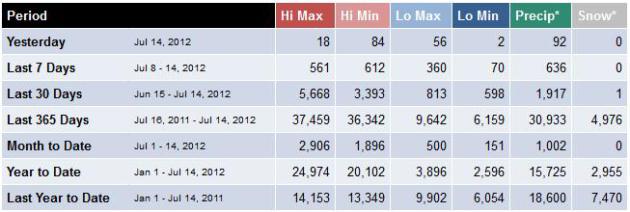 Weather Records
Weather Records. So far in 2012
NCDC reports over 45,000 warm weather records, over 6,000 cold weather records.
Last 2 Weeks - Percentage Of Normal Rainfall. I
can't remember seeing this much of a rainfall extreme in the span of 2
weeks. Portions of Texas (near Houston) have seen 6 times more rain than
normal in the last 14 days - while no rain has fallen over California
(not that unusual for July). But across much of the Corn Belt rainfall
has ranged from 0 to 10% of normal since July 1. Map above:
NOAA.
Drought Stretches Across America, Threatens Crops. Details from
CNN.com: "
A
dry and mild spring led Don Villwock, like all of Indiana's corn and
soybean farmers, to plant two weeks early this year. He was hopeful
for a bountiful Labor Day harvest. But the rain didn't fall and June
brought blistering heat. Now, as punishing drought grips the Midwest,
Villwock, 61, walks his hard-hit 4,000 acres in southwest Indiana in
utter dismay. Where there should have been tall, dark green, leafy
plants, there now stand corn stalks that are waist high or, at best,
chest high. They are pale in color and spindly. Fragile. Tired." (map above: U.S. Department of Agriculture).
Drought Threatens To Darken Obama's Reelection Plans. Here's an excerpt from
The Christian Science Monitor: "
A massive drought parching some of America’s
most productive farm regions is pushing food prices up to the point
where wilting corn plants could influence the presidential election.
More than 1,000 US counties – many of them in the grain capitals of the
Midwest – have applied for federal disaster relief, meaning they’ve
had drought conditions for more than eight weeks. Moreover, 61 percent
of the US is now considered drought-stricken, the highest percentage in
the 12-year history of the US Drought Monitor. Drought or no drought,
the US will still produce about a third of the world’s corn and will
see its third-largest corn crop ever. Moreover, a drought prognosis by Iowa State University agri-economist Chad Hart suggests that parts of the country – including Georgia and portions of Texas – are likely to see relief as the summer progresses, even as some part of the Midwest may see dry conditions worsen."
2012 Drought Could Stall Mississippi River Barge Traffic. AccuWeather.com has the story; here's an excerpt: "
The ongoing drought
has river levels along the Mississippi River plunging to very low
levels this summer and could stall barge traffic in some areas into the
autumn if rainfall does not come soon. It was just last year when
levels along the Mississippi River and many of its tributaries were
close to record high levels. What a difference a year makes. Falling
river levels are not uncommon during the summer months in the central
and eastern United States. However, the building drought over much of
the middle of the nation currently has the mighty Mississippi running
well below normal and levels in many areas are likely to fall through
much of the summer, unless widespread rain comes."
Photo credit above:
"As levels
continue to drop along a long stretch of the Mississippi River in the
coming weeks, the risk of grounding incidents will increase." (Photos.com image)
Simmering First Half Of July.
During the first 2 weeks of July temperatures across much of Minnesota
averaged 4-8 F. warmer than average, as much as 12 F. warmer than normal
near Madison, Wisconsin. Source: NOAA.
Warmest First 10 Days Of July. Here's an excerpt from the latest installment of Dr. Mark Seeley's excellent
WeatherTalk blog, with some jaw-dropping statistics: "
For
the Twin Cities, and perhaps a few other climate stations, the first
ten days of July 2012 have been the warmest in history based on mean
temperature values. Seven of the first ten days brought daytime
temperatures of 90 F or greater (two days were over 100 F), and on five
nights the temperature remained above the 70 degrees F mark. These
values produced a mean temperature of 82.7 degrees F, or 9 degrees F
warmer than normal. The following is a list of the top ten warmest
first ten days of July in the Twin Cities area going back to 1871:"
1. 82.7 F in 2012
2. 82.4 F in 1948
3. 82.2 F in 1936
4. 81.2 F in 1989
5. 81.2 F in 1949
6. 80.8 F in 1937
7. 80.0 F in 1974
8. 79.2 F in 2002
9. 79.1 F in 2011
10. 79.0 F in 1988
*
click here for latest U.S. Drought Monitor for Minnesota, courtesy of NOAA and USDA.
Drought: Natural Disaster Declarations In 26 U.S. States. Details from
The Guardian; here's an excerpt: "
America declared a natural disaster in more than 1,000 drought-stricken
counties in 26 states on Thursday. It was the largest declaration of a
national disaster and was intended to speed relief to about a third of
the country's farmers and ranchers who are suffering in drought
conditions. The declaration from the US department of agriculture
includes most of the south-west, which has been scorched by wildfires,
parts of the Midwestern corn belt, and the south-east.It was intended
to free up funds for farmers whose crops have withered in extreme
heatwave conditions linked by scientists to climate change."
Photo credit above: "
A tractor ploughs a corn field near
Hondo, Texas. Natural disaster has been declared in many areas across
the southern United States." Photograph: Eric Gay/AP
Is This The New Normal? The story from
Huffington Post - here's an excerpt: "
I'm
not the only one who is pondering the extreme weather we've been
having in the U.S. this summer. Pick up any newspaper or read pretty
much any news magazine and there's discussion of the extreme heat waves
we've been having in the continental U.S. At my Colorado field site,
the snow melted a month earlier than normal, and the marmots I study
emerged earlier than ever. That is the ones that survived. You see,
marmots hibernate, and to successfully hibernate, they need a good
"blanket." Snow provides the "blanket," and there wasn't much snow last
winter (it was an exceptionally warm and dry winter), so we had what
probably could be described as extra mortality from a winter drought.
In addition, it hardly rained at all in May and June, and the
vegetation is much less verdant than I've ever seen it. These tinder-dry
forests and meadows exploded into firestorms in the Colorado Front
Range, but locally we were lucky. And now it seems we've finally got
some seasonal precipitation that should forestall a summer drought. And
this is important because we know that summer droughts are really bad
for marmots. Fingers crossed."
No Significant Rain For The Corn Belt. The 5-Day
rainfall prediction shows significant rain over the eastern seabord,
some 1-3" amounts from Florida and Alabama to Kentucky. A little rain
may fall over the Ohio Valley, little or no rain expected over the
Central Plains, where drought conditions will go from bad to worse. Map:
NOAA HPC.
“
I think it’s huge that we got a judge to acknowledge that the
atmosphere is a public trust asset and the air is a public trust asset,” Abrams said. “It’s the first time we’ve had verbiage like this come out of one of these cases.” - excerpt of an article from The Climate Post and National Geographic below.
Bizbeat: Climate Change Brings Insurance Worries.
Being a farmer just got tougher - it seems we careen from one extreme to
the next, flood to drought, back to flooding. I have enormous respect
for farmers, and the risks they take to put food on our table. Here's in
interesting article from
madison.com on the liability challenges surrounding farming in a new (more extreme) climate: "
If
this summer is any indication, climate change will cost us all. From
drought-ravaged farmers filing crop insurance claims to homeowners
dealing with storm damage, the fickle weather is proving expensive.
Insurers nationwide are already facing claims of almost $2 billion from
fires, hail and thunderstorms that hit parts of the U.S. last month
Moreover, the extreme conditions are calling into question many of the
assumptions about risk and forcing insurers to adjust going forward.
“Mother Nature has always been unpredictable but when you start
factoring in climate change, it throws the actuarial numbers out the
window,’’ says Martha Lester-Mittenzwei, insurance and risk management instructor at Madison College."
Photo credit above: "
Corn leaves curl under a withering
sun in a field along Highway 14 near Arena on Thursday. Farmers have
struggled to maintain crops amid record heat and droughts this summer."
Flooding Threat Not Over Yet For Houston Area. While
much of America withers, the rain just won't stop for much of east
Texas, in stark contrast to last summer's historic drought. Here's an
excerpt from
The Houston Chronicle: "
Yet
another day of widespread rainfall across the Houston area produced
the city's most significant flooding in more than two years, prompting
rescues from flooded homes and vehicles. The worst flooding was
northwest of Houston, where more than 15 inches of rain have fallen
during the last five days, driving Cypress Creek well above its flood
stage and even higher than during Tropical Storm Allison in 2001. "It's
going to get worse before it gets better," said Francisco Sanchez, a Harris County spokesman, as Cypress Creek was still rising Friday afternoon."
Photo credit above: "
Janet and Jerry Turner
watch and wait to have water removed from their flooded home on Pine
Belt on Saturday, July 14, 2012 in Cypress." (Melissa Phillip / Houston Chronicle)
Monsoon Flooding In Phoenix. Tropical moisture surging northward into Arizona sparked serious flash flooding yesterday; details via
Facebook: "
Watch for high water over roadways!! Turn around, don't drown! (US 60 & Val Vista - csty of ADOT)."
Disastrous Flood Response Ignites Russian Rage Online.
NPR has the story; here's an excerpt: "
Russians
are slowly beginning to recover from the devastating flooding that
soaked the southwestern region of Krasnodar. The floods, which struck
in the early morning hours on July 7, reportedly killed more than 150
people. It wasn't long before outrage flowed. Masha Lipman, a
researcher with the Carnegie Endowment for International Peace in
Moscow, says the government had advance notice of the disaster, but
didn't pass along the message. "The flood hit at night and the
government had been alerted to the risk of the flood around maybe 10
p.m.," she tells NPR's David Greene."
Photo credit above:
Sergey Ponomarev/AP. "An
Emergency Ministry soldier helps to repair religious icons in a church
hit by flood water in the town of Nizhnebakansky, about 750 miles
south of Moscow, on Tuesday."
Japanese Ordered To Evacuate Flood-Hit Island. This is a remarkable video clip, courtesy of
aljazeera.com; here's an excerpt: "
Almost
a quarter of a million people have been ordered to leave their homes
in southwest Japan as heavy rain pounds the area for the third
day, leaving at least 20 people dead, officials and reports say. The
Japan Meteorological Agency warned of more landslides and floods on the
main southern island of Kyushu as rainfall of up to 11 centimetres
per hour was recorded early on Saturday. The agency warned that
rainfall of up to 80 millimetres per hour could hit parts of northern
Kyushu later in the day."
Wales Weather: Met Office Raises Alert On Rain And Floods.
The forecast for the London Olympics looks wet, at least for the first
week of the games; hopefully things will improve over time. An update on
the flood risk from the
BBC: "
There
is now a "be prepared" warning for the eastern part of mid Wales, and
people are advised to take extra care. Rain is also expected to affect
the rest of Wales, with persistent rain in the north and local heavy
thundery downpours in the south. The advice comes after weeks of wet
weather which saw severe flood damage in villages around Ceredigion in
June. Earlier this week, the Prince of Wales met victims of the flooding
and emergency services involved in the rescue operation."
* satellite image above courtesy of
sat24.com.
Watching The Tropics.
NOAA is keeping an eye on an area of disturbed weather between the Bahamas and the Outer Banks of North Carolina.
Hurricane Hunters Fly Into The Eye Of The Storm For Science - And TV. Here's an excerpt of an interesting article at
wired.com: "
To
gather information on violent storms, the National Hurricane Center
relies on tools like sensors and satellites. And some badass Air Force
Reserve pilots. The 53rd Weather Reconnaissance Squadron flies directly
into the world’s worst storms to collect meteorological data. And like
any dangerous job involving weather and vehicles, they now have a
reality show: Hurricane Hunters recently premiered on the Weather
Channel. “What I do is sort of crazy to the rest of the aviation world.
Pilots are trained to avoid weather—we’re actually flying into the most
extreme storms,” says Sean Cross, a pilot featured on the show who has
flown for more than 11 years with the 53rd."
Minnesota: 5th Best State To Live In The USA? Thank you
CNBC,
for sharing our dirty little secret: clean air, abundant lakes, smart
locals with an amazing work ethic and a kind word. Yes, I'm waving the
flag, but there's nowhere else on Earth I'd rather live (and I've been
around the block, trust me). Here's an excerpt:
2012 Quality of Life Points: 250 out of 350
2011 Quality of Life Rank: 8
"
Minnesota is the Land of 10,000 Lakes, and all that natural beauty
contributes to the quality of life. But there is more to the state than
that. The home of the Mayo Clinic is one of America’s healthiest
states. The crime rate is among the lowest in the country. Air quality
is among the best, too. From the cosmopolitan Twin Cities to the remote
beauty of the North Woods, Minnesota has it all."
A 500 Mile Electric Car? CNN.com has the story - here's an excerpt: "
Despite their green credentials, electric cars still come up short against their petrol-powered cousins when it comes to range
-- how far they go before the battery needs recharging. But a new
"range-extended" electric vehicle (EV) equipped with the latest fuel
cell technology is promising to close the gap going 500 miles (800
kilometers) without refueling, say its developers. Bringing together the
expertise of three Danish companies, the Modular Energy Carrier concept
(MECc) utilizes bio-methanol -- a biofuel which can be harvested from a range of sources including natural gas -- to improve the competitiveness of EVs."
That's Not My Phone. That's My Tracker. If you weren't already paranoid you will be after reading this article from
The New York Times; here's an excerpt: "
THE
device in your purse or jeans that you think is a cellphone — guess
again. It is a tracking device that happens to make calls. Let’s stop
calling them phones. They are trackers. Most doubts about the
principal function of these devices were erased when it was recently disclosed
that cellphone carriers responded 1.3 million times last year to law
enforcement requests for call data. That’s not even a complete count,
because T-Mobile, one of the largest carriers, refused to reveal its
numbers. It appears that millions of cellphone users have been swept up
in government surveillance of their calls and where they made them
from. Many police agencies don’t obtain search warrants when requesting location data from carriers."
Sticky Sunday.
A deck of PM clouds kept MSP a few degrees cooler than expected, with a
high of only 90 F. The sun came out sooner in St. Cloud, where the high
climbed to 93, as hot as Redwood Falls. Unless I missed something (very
possible) the low in Duluth was NOT - 1 F.
Paul's Conservation Minnesota Outlook for the Twin Cities and all of Minnesota:
TODAY: Heat Advisory. Hot sun. DP: 65. Winds: SW 20+ Feels like 105+ by late afternoon. High: 102
MONDAY NIGHT: Warm and sultry. Low: 78 (not dropping below 80 in the downtowns).
TUESDAY: More clouds, some relief. Chance of thunder by Tuesday night. Dew point: 65. High: 89
WEDNESDAY: Isolated T-storm early. More tolerable with a mix of clouds and sun. DP: 61. Low: 68. High: 86
THURSDAY: Muggy, stray T-storm possible. Dew point: 63. Low: 70. High: near 90
FRIDAY: Steamy sun, hot and sticky again. Dew point: 67. Low: 73. High: 94
SATURDAY: Near-record heat. Sunny. Dew point: 68. Low: 75. High: 97
SUNDAY: Triple digit heat possible over southern MN. Make it stop. Murky sun. Low: 77. High: 98
Fun with Triple Digits
We can't change the weather (yet), but many of us have the luxury of cooling the air within our homes and offices.
Tomorrow marks the 110th anniversary of air
conditioning. On July 17, 1902 Dr. Willis H. Carrier invented modern air
conditioning at a Brooklyn, N.Y. printing plant - to help keep ink
impressions on paper during the hot, humid summers. This miraculous
invention was limited to industry at first; Carrier (yes, that Carrier)
filed 80 patents; as costs came down more homes were able to afford A/C.
How the pioneers survived torrid days like today without it is baffling.
Heat Advisories may be upgraded to Heat Warnings
later, as the mercury approaches an all-time record of 102 F, set in
1926. A dew point of 66 will make it feel like 105-108. Stay hydrated;
check in on older friends & neighbors.
Winds shift to the northeast Tuesday, "cooling"
us off into the upper 80s. Some cool front. A few isolated midweek
T-storms won't help the growing drought much; most farms going without
rain all week.
The pattern is remarkably persistent; sizzling
heat returns late week. We may be flirting with 100 F by next weekend. 4
days above 100? That hasn't happened since 1988.
Climate Stories...
“
An investment in knowledge pays the best interest.” - Ben Franklin
Climate Change May Lead To Fewer - But More Violent - Thunderstorms. An interesting story from
scienceblog.com; here's an excerpt: "
Researchers
are working to identify exactly how a changing climate will impact
specific elements of weather, such as clouds, rainfall, and lightning. A
Tel Aviv University researcher has predicted that for every one degree
Celsius of warming, there will be approximately a 10 percent increase
in lightning activity. This could have negative consequences in the
form of flash floods, wild fires, or damage to power lines and other
infrastructure, says Prof. Colin Price, Head of the Department of
Geophysics, Atmospheric and Planetary Sciences at Tel Aviv University.
In an ongoing project to determine the impact of climate change on the
world’s lightning and thunderstorm patterns, he and his colleagues have
run computer climate models and studied real-life examples of climate
change, such as the El Nino cycle in Indonesia and Southeast Asia, to
determine how changing weather conditions impact storms."
U.S. Thunderstorm Insured Loss Trends: 1980-2011. Graph above courtesy of Munich Re.
Climate Change Fuels The Perfect Firestorm. The story from
Climate Central; here's a clip: "
The
last time I chased wildfires across Colorado was in 2003, while
serving as a seasonal wildland firefighter for the U.S. Forest Service. I
was part of a crew of 20, bouncing through the Rocky Mountains in a
battered school bus to put out fires with names like Crazy Woman and the
Bluebird. It was a war fought with rakes, spades, axes, and chainsaws,
in which I extinguished more flames with shovelfuls of dirt than I did
with water. The year before, Colorado had lost 133 homes and more than
138,000 acres to the Hayman fire, at the time the most destructive in state history.
Climate change wasn’t even on the radar of most firefighters I worked
with back then, and when the topic did come up, there was a healthy
amount of skepticism. This year, it’s hard to find a wildland
firefighter who isn’t convinced the warming of the West is making his
job more difficult and dangerous."
Photo credit: "
Trees on a ridge in Colorado Springs go up in flames as the Waldo Canyon fire burns in late June." Credit: Michael Kodas.
Climate Change And How The West Was Lost. The trends
out west are ominous - heat and drought is bad enough, but conditions
are converging to dramatically increase the potential for fire.
Climate Central has the story; here's an excerpt: "
For
many people, global warming is merely a threat they hear about on TV, a
headline they read in the paper, or news from a summit in a foreign
city where bureaucrats bicker over parts per million. But where I live,
it is a sound, a drone, real and seasonal, embedded in the same mix as
the buzz of spring’s calliope hummingbirds, the bugle of bull elk in
fall, and the silence of deep winter.
The trained ear cannot only pick it from the cacophony of nature, but
also read in it signals of events: an early spring, a drought, a
drought elsewhere, and, over decades, a slow and inexorable crescendo.
But then I live in an odd place. Geography and happenstance made
Missoula, Montana, one of a handful of centers for fighting wildfire in
the West. Lately, that has become significant on a number of fronts,
all recorded with this sound: the distinctive drone of P-2V Neptunes,
the lumbering Korean War vintage slurry bombers based at the airport
just a few miles across the ridge from my house."
Photo credit above: "
A P-2V Neptune fire tanker drops borate fire retardant on a rugged mountainside." Credit:
arbyreed/flickr.
Change Is Here. Climate Change. The story from
Huffington Post; here's an excerpt: "
DEAR
Barack Obama and Mitt Romney--if I may be so familiar, as you are with
me in your fund-raising emails. You are campaigning for our nation's
highest office in a year of record-breaking heat waves, droughts,
floods, and monster storms. More than half the contiguous U.S. is under
drought conditions. In June wildfires destroyed 1.3 million acres
across the country. More than 40,000 daily heat records were broken-by
July. Climate scientists
tell us that the signals are loud and clear: We are experiencing
global warming-NOW. Our climate is changing, more and more
rapidly--because of greenhouse gas pollution. We have compromised the
thin crust of atmosphere that protects our lives on this planet.
The weather is sending us a clear message: Danger. Danger. Danger."
Bill Bye Talks About Climate Change And Wildfires; Defends Himself After CNN Reporter Calls Him "Kooky" (Video). Detals from
Huffington Post; here's the intro: "
It seems Bill Nye won't ever be able to escape his playful, comedic past. In a interview with CNN, the "Science Guy" suggested climate change was to blame for the recent wildfires. But one reporter questioned his credibility
on the topic, suggesting some may view him as "the kooky guy that
doesn't know what he's talking about." Though Nye isn't a climatologist,
he says graphs and recent events pretty much speak for themselves. "We
have record-high temperatures; we have enormous fires in Colorado; we
have tornadoes in Michigan, Brooklyn; we had a 30-degree temperature
drop in Maryland and Virginia...," he said during the interview."
Study: Texas's Hellacious 2011 Summer Is A Prime Example Of Loaded Climate Dice. Details from
dallasobserver.com; here's an excerpt: "
Our
record-busting summer 2011 continues to be an object of fascination to
climate scientists all over the world. Alongside floods in Thailand,
drought in Eastern Africa and the European heat wave, the driest,
hottest year in recorded Texas history has provided a case study for
gauging the influence of climate change on weather extremes. Researchers
from Oregon State University, the University of Oxford and Exeter
scrutinized last summer and -- with data from 2008 (the most complete
set we have) and comparable La Niña years in the 1960s -- ran them
through a set of computer models. When they threw the results on a
scatter plot, the spread was dramatic: Texas was 20 times more likely to
see heat extremes in 2008 than in years with similar oceanic
conditions in the '60s. They found much the same for drought."
Photo credit: Brandon Thibodeaux
Protecting The Business: Why Conoco, Caterpillar, And Exxon Resort To Double-Talk On Climate Change. Here's an excerpt of a story from
Huffington Post: "
When
Galileo promoted the idea that the earth revolves around the sun in
the 1600s, the church rejected his claims as heresy and subjected him
to a lifetime of house arrest. Understandably, such theories could
contaminate the minds of good Christians, and would therefore be bad for
business. Four hundred years later history is repeating itself, albeit
with corporations (mostly those deeply invested in fossil fuels) as
the ones seeking to discredit the scientific community in hopes of
protecting their economic self-interests. In the recent study A Climate of Corporate Control,
the Union of Concerned Scientists uncovered several S&P 500
companies that had "made statements in support of climate science and
policy in some public venues, while spreading misinformation on climate
science or hindering science-based policy elsewhere." In fact, of the
28 companies researched, 21 of them acted in direct contradiction to
their stated positions on climate change, largely employing methods that
skirted direct accountability (e.g. sizeable political contributions,
lobbying expenditures and the funding of trade groups and think tanks).
Of the most egregious offenders are companies such as Conoco
Phillips, Caterpillar Inc., Exxon Mobil and Peabody Energy Corporation."
Global Carbon Emissions. Graph above courtesy of the
U.S. Dept. of Energy
and the Carbon Dioxide Information Analysis Center. The U.S. DOE
estimates approximately 1 trillion tons of CO2 and methane have been
released into the atmosphere, worldwide, in the last 50 years.
"
The Carbon Dioxide Information Analysis Center estimates
that about 76 percent comes from the combustion of coal and oil, and
another 20 percent from natural gas. The remaining amounts to round up
to 100 percent come from cement production and gas flaring." - source
here.
'
Would gravity be overturned if we could see Sir Isaac Newton’s personal letters?' -- Scott Mandia
Poll: Most Believe In Climate Change. Details from
politico.com; here's a snippet of the article: "
A
majority of Americans say they think climate change is real, according
to a new poll on Friday. Six in 10 believe weather patterns around the
world have been more unstable in the past three years, The Washington Post/Stanford University poll
found. Almost as many people said it has been hotter on average in
that time than ever during the same period. And as for what the two
presidential candidates want to do about climate change, almost half of
respondents say President Barack Obama wants to take a lot of
government action on global warming, while just 11 percent say they
believe that is one of Mitt Romney’s goals."
Photo credit above: "
About two-thirds of those surveyed said the U.S. should be a leader on the issue." AP Photo
Temperature Climbing, Weather More Unstable, A Majority Says In Poll. Details from
The Washington Post; here's an excerpt: "...
Americans
polled by The Post and Stanford do see climate change as occurring:
Six in 10 say weather patterns around the world have been more unstable
in the past three years than previously, a perception that’s changed
little since 2006. Nearly as many also say average temperatures were
higher during the past three years than before that. In terms of what
can be done about it, about 55 percent say a “great deal” or “good
amount” can be done to reduce future global warming. At the same time,
60 percent of those polled say it will be extremely or very difficult
for people to stop it."
5-Mile-Long Landslide In Alaska National Park; Warming Eyed As Possible Culprit.
MSNBC.com has the story; here's an excerpt: "
A
massive landslide sent tons of rock and debris tumbling more than five
miles down a glacier in Alaska, the National Park Service reported in
an event that could be yet another sign of a warming world. Located in a
remote area of Glacier Bay National Park, the slide was so big it
registered on earthquake monitors as a magnitude 3.4 event. Officials
noticed the monitor blip on June 11 but it wasn't until July 2 that a
pilot passing over the site took photos that showed just how large it
was, Glacier Bay National Park announced on its Facebook page."
Photo credit above: FlyDrake.com via Glacier Bay National Park. "
Rock and debris from a landslide lie along five miles of what had been an ice-white glacier inside Glacier Bay National Park."
As Country Breaks Heat Record, Studies Analyze Climate Connection. The story from
National Geographic, here's an excerpt: "
The same week the continental United States broke its record for the hottest six months in a calendar year, the United Nations announced 2011 was among the 15 warmest so far. Climate change may have increased the chances of the types of extreme weather seen in 2011, and may have been heavily influenced by a weather pattern called La Niña. The odds of such record U.S. heat being a random coincidence—while not 1 in 1,594,323, as the National Oceanic and Atmospheric Administration’s National Climatic Data Center said in a new report—are perhaps on the order of 1 in 100,000. One NOAA scientist claims there is an 80 percent chance the record heat can be attributed to climate change. Meanwhile, Meteorologist David Epstein called the extremes “simply a reality of nature.”
Environmental Threats: Antarctica In Danger Of Climate Change, Ocean Acidification And More.
Huffington Post has the story; here's an excerpt: "
Antarctica
and its surrounding waters are under pressure from a variety of forces
that are already transforming the area, scientists warn. The most
immediate threats are regional warming, ocean acidification and loss of
sea ice, all linked to global levels of carbon dioxide. Sea ice cover,
crucial to the survival of virtually every animal that lives on and
near the continent, already has been reduced by warming, according to a
new study published in the July 13 issue of the journal Science.
Visits by tourists, researchers and other people also threaten to change Antarctica, as does the harvesting of animals like krill that are key to the Antarctic food chain."
War And Climate Change. Here's an excerpt of a thought-provoking piece in
The Huffington Post: "
...Social
change of real value is slow-going indeed. How do we manifest
responsibility to the planet? A serious consensus is building across the
globe that doing so is crucial, that the weather extremes of recent
years are no less than global warming in action, the result of centuries
of unbridled, industrial-age irresponsibility toward the planet, and
something fundamental has to change in how we live our lives and sustain
ourselves, but our leadership, certainly in this country, seems
incapable of addressing an issue of such complexity. President Obama,
who campaigned as a new kind of leader, perpetuates, in the name of
national security, assassination by drone. Meanwhile, every real issue
of national security, including climate change, is ignored. Every
problem we face either has an us-vs.-them solution or no solution at
all -- indeed, no existence as a problem. A year ago, when wildfires
ravaged the state of Arizona, the best John McCain could do was blame
it on illegal immigrants. We're stuck in a paradigm of domination, but
we can't fight our way out of the ecological disaster we've brought on
ourselves. Perhaps, having brought the hell of war to the Middle East
over the last two decades, we're symbolically reaping what we've sown."
Climate Change Will Make The World Endear Geoengineering.
I'm not sure endear is the right word. Tinkering with the atmosphere to
try to "fix" our climate problem? What can possibly go wrong? The story
from
groundreport.com; here's an excerpt: "
The
appropriate time for large scale deployment of geoengineering will be
something like now, that the world experiences extreme weather events.
‘Geoengineer the climate, engineer it to save us’ will be the
prevalent spout from people because of hard to bear recurrent extremes
of devastating magnitude. The losses and impact from weather extremes,
of the past few weeks around the world, has prompted serious concerns.
Rich and powerful nations are being hurt likewise small and developing
nations. Similar weather occurrences have rocked some of the affected
places previously, and made news but was seen as a snippet of future
climate change."
U.S. Wastes More Energy than China, Europe. Some interesting statistics from
The Los Angeles Times; here's the introduction to the story: "
In
the U.S. – land of the gas-guzzler SUV and 24/7 air conditioning –
energy efficiency isn’t known as a strong suit. The country’s power
management efforts are so poor that a new report ranks it near the
bottom of the pack of major economies. On a list of a dozen countries,
which together account for 63% of global energy consumption, the U.S.'
efficiency efforts are ranked in lowly ninth place. With a score of 47
out of 100, the U.S. outpaces only Brazil, Canada and Russia, according to the report from the nonprofit American Council for an Energy-Efficient Economy, known as ACEEE."
Photo credit above: "
Traffic piles up in Los Angeles. The
U.S. ranks last in energy efficiency in the transportation sector,
according to a new report from ACEEE."
(Al Seib / Los Angeles Times)
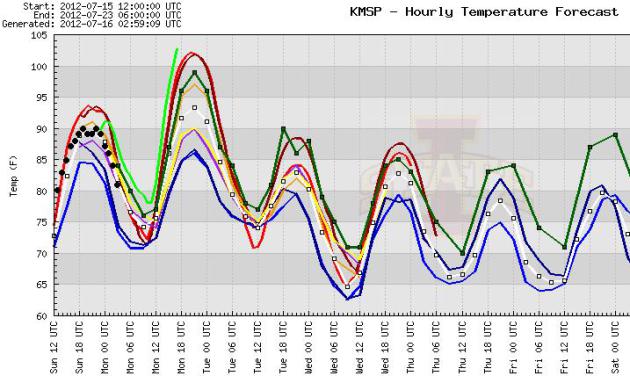
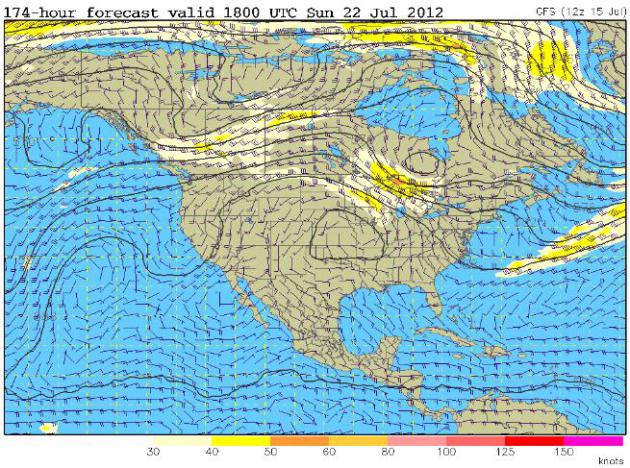

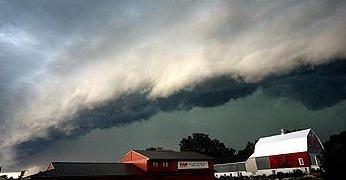
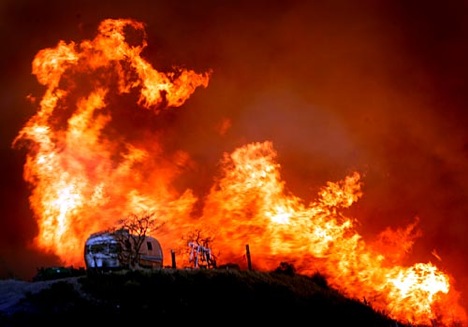




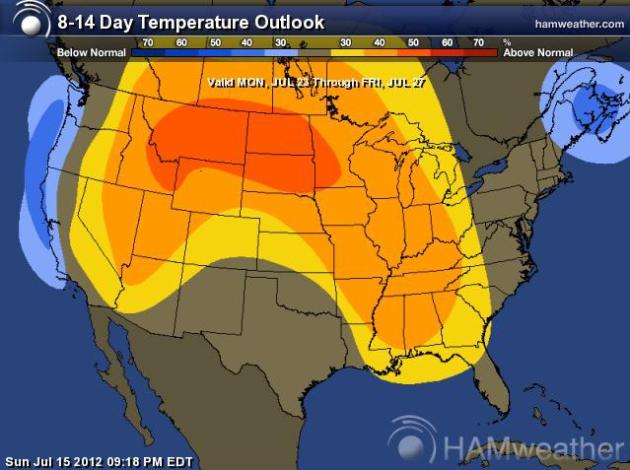
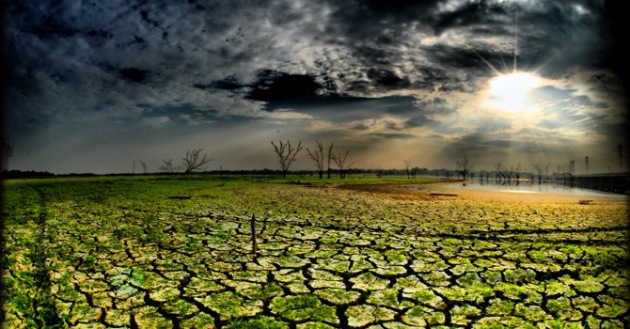






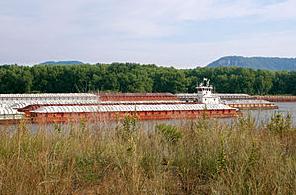

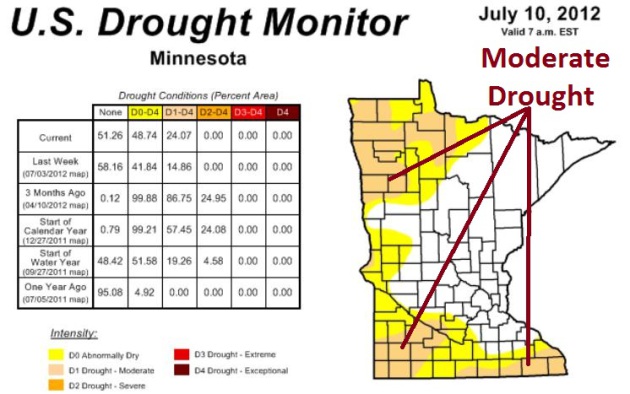

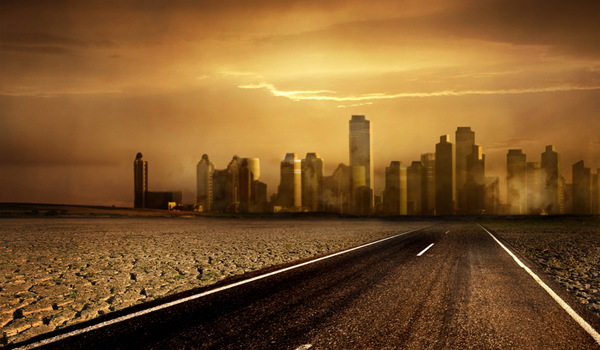

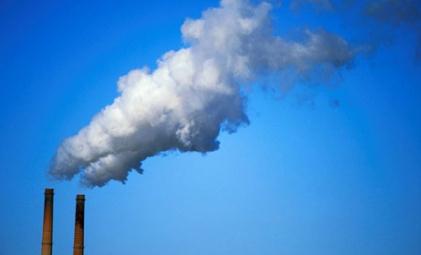
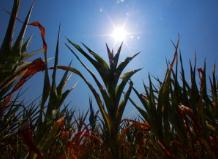
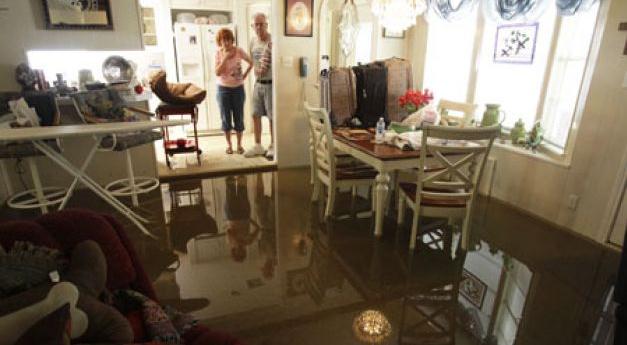
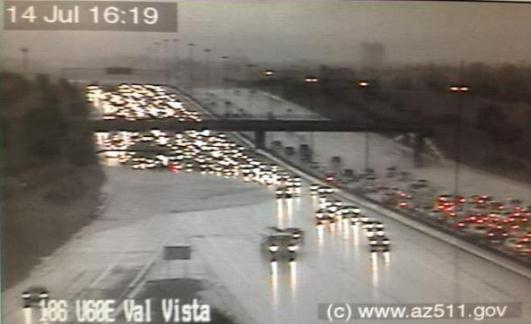
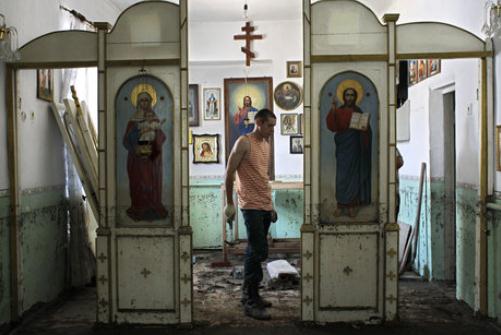






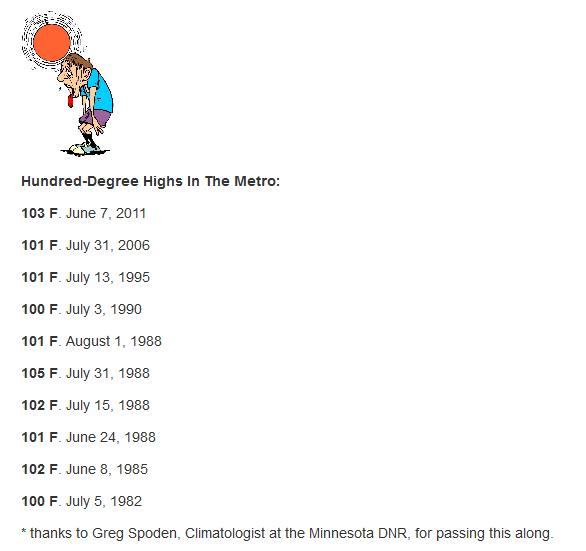

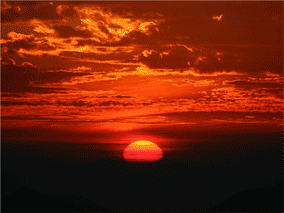
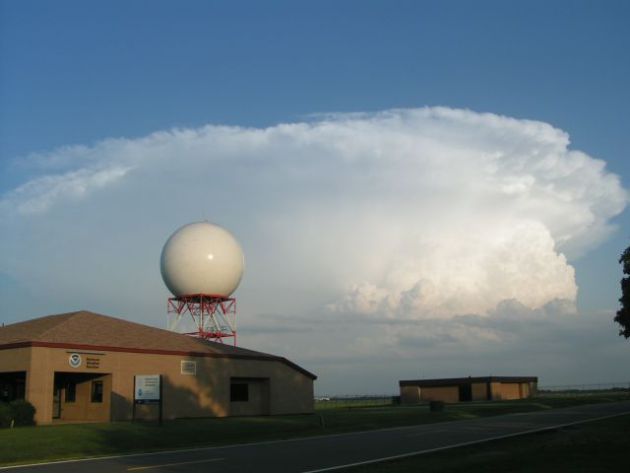
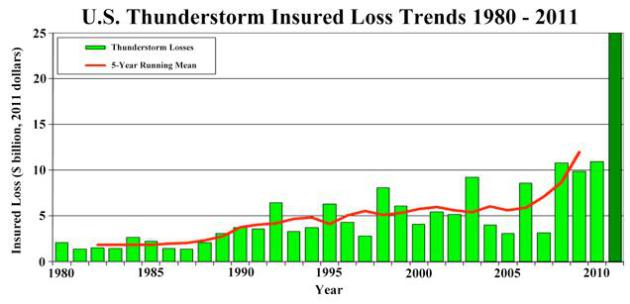
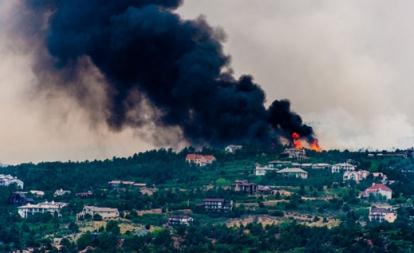


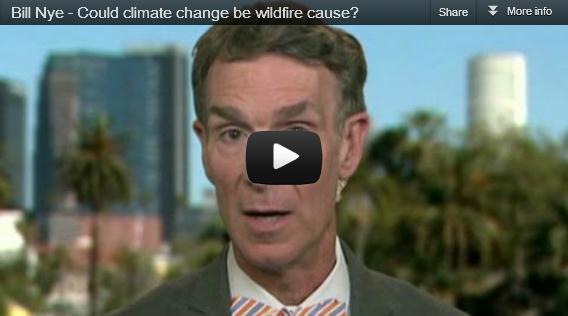
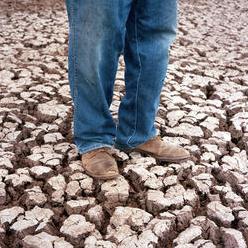
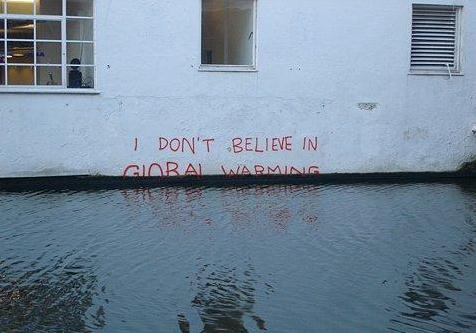








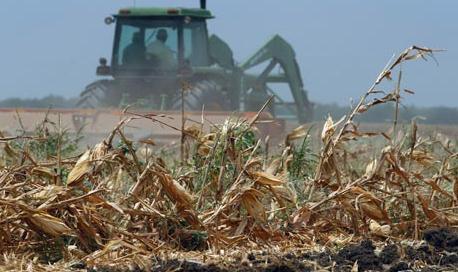
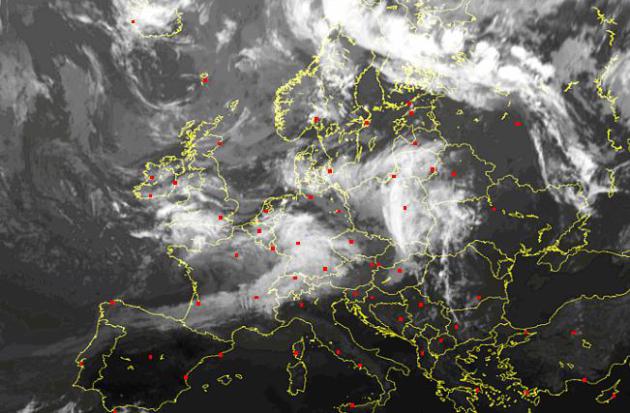
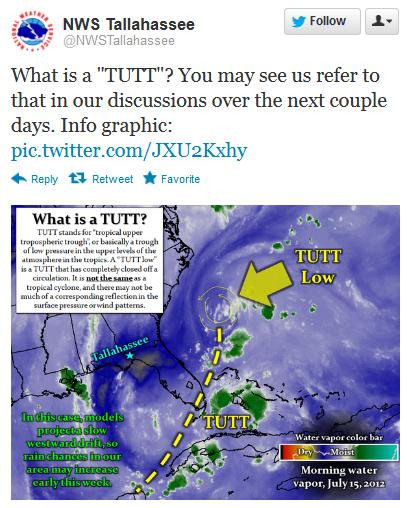

No comments:
Post a Comment